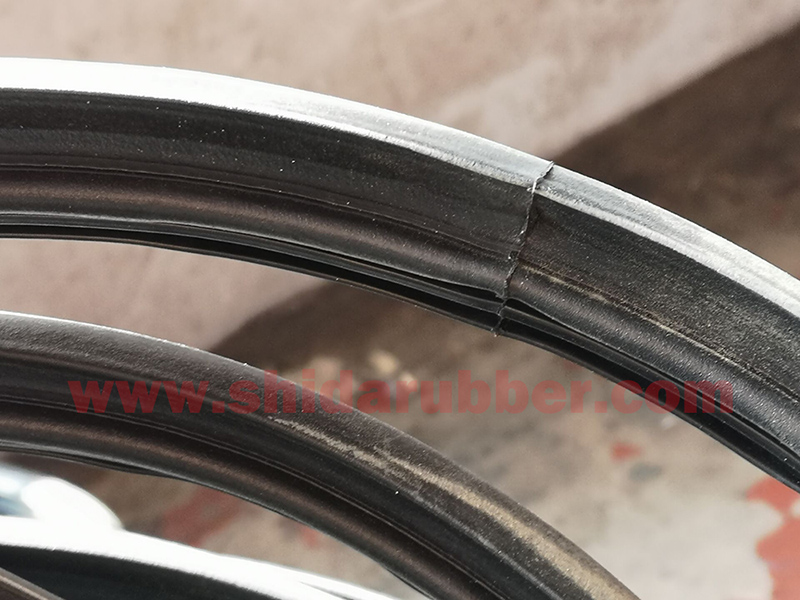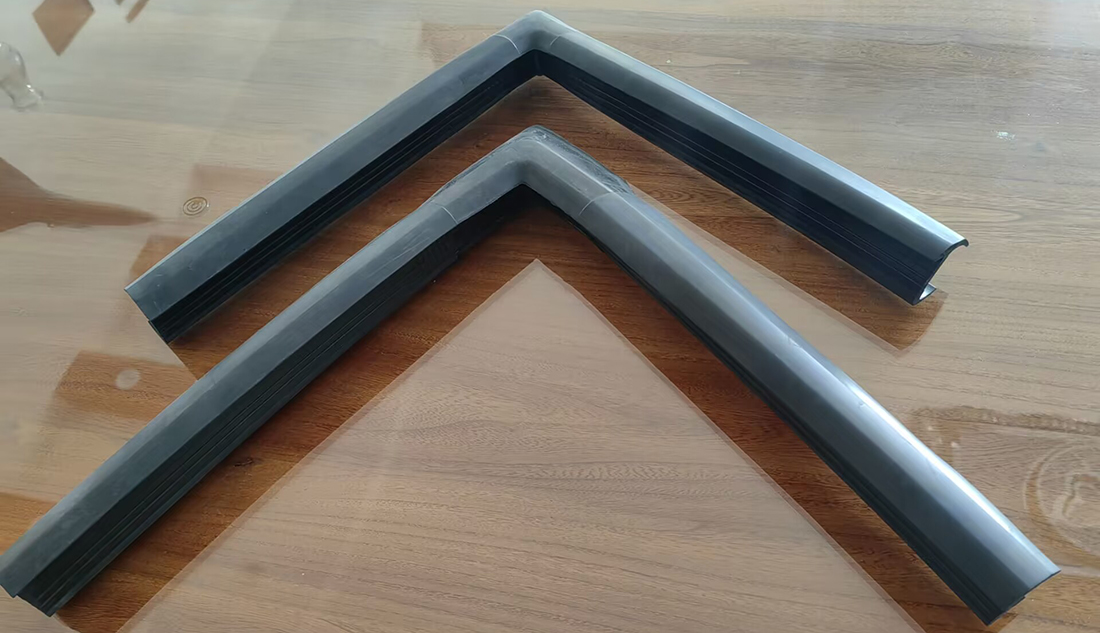
Hot splicing and vulcanizing for rubber gaskets are bonding techniques that use heat, pressure, and a film splice or uncured rubber to join the ends of profiles. Hot splicing uses thin polyethylene (PE) film and either a conventional heating source or infrared (IR) light. Vulcanization uses an uncured rubber compound, along with heat and pressure. Both hot splicing and vulcanization create chemical bonds at the molecular level.
Hot Spliced Gaskets
Hot splicing generally provides better results than vulcanization. Traditional splicing takes longer than IR splicing, but both methods create strong, reliable bonds. The type of profile – sponge or solid – usually determines whether conventional splicing or IR splicing is recommended. The shape and size of the profile are important considerations, too. Some materials, such as silicone, support traditional hot splicing but not IR splicing.
Infrared splicing is a good choice for sponge rubber profiles because infrared light won’t burn the elastomer. With rubber gaskets, the types of splices include butt, bevel, step, and corner.
- Butt splices bond two ends of a seal with only limited stress at the splice.
- Bevel splices are used in cross-sectional areas that don’t allow for butt splicing.
- Step splices provide maximum bond strength and allow nominal deformation in a static seal.
- Corner splices are also used in static applications, but when the joint is not under strain.
Vulcanized Gaskets
Vulcanizing is a reliable, cost-effective process for joining sponge or solid profiles in many different shapes and materials. Applications include O-rings, tubing, and other products with a space for the free-flowing passage of air to the gasket. Vulcanized gaskets can be used in various applications, but this bonding or joining technique is best-suited for low volume quantities rather than higher volume production.
Compared to hot splicing, vulcanizing is more forgiving since the cuts don’t have to be as smooth and precise. With vulcanization, an uncured rubber compound flows into and fills any gaps while forming a strong bond between profile surfaces. This uncured compound is the same type of elastomer as the profile itself. First, the uncured rubber compound is applied to the length of profile. The ends are then pressed together and the joint is placed into a hot mold. As with hot splicing, cooling is required.
Hot Splicing and Vulcanizing for Rubber Gaskets
We offer traditional hot splicing, infrared splicing, and vulcanizing for custom-fabricated gaskets that meet all of your sealing and insulation requirements. Next week, we’ll take a look at another joining or bonding technique – molded corners for finished gaskets. To learn more about how custom rubber gaskets are made and how we can help you, please contact us.

